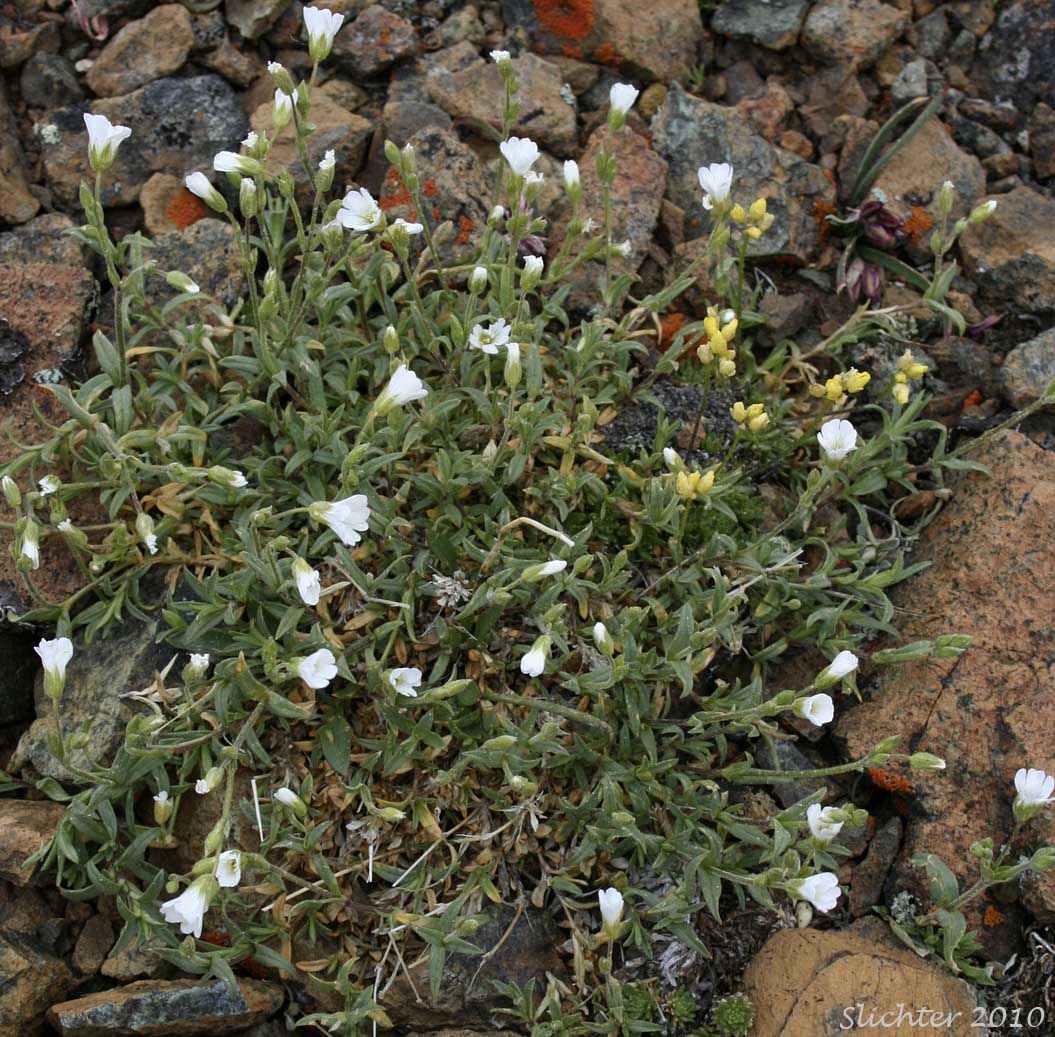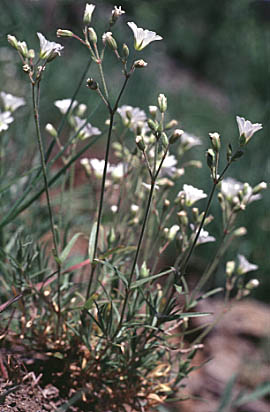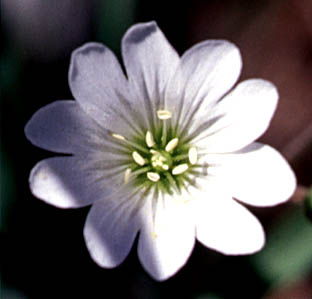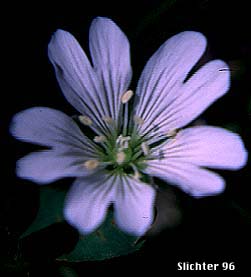
 The
photo at right represents field chickweed as seen at Crown Point in the western
Columbia River Gorge in late May, 2001.
The
photo at right represents field chickweed as seen at Crown Point in the western
Columbia River Gorge in late May, 2001.
Field chickweed is a highly variable perennial with spreading or trailing stems which can form loose mats from 20-40 cm wide. The herbage is variable, ranging from smooth or non-hairy to copiously glnadular-hairy. The numerous flowering stems range from 5-50 cm long. The leaves are mostly linear to narrowly lanceolate in shape with one central vein. They range from 1-3 cm long. The leaves of the sterile shoots or trailing stems may range from narrowly oblong to oblong-ovate in shape and may be up to 3-4 mm wide. The leaves of the mid-stem typically have secondaryleaves or short sterile shoots in their axils.
The inflorescence is an open cyme, typically with more than 5 flowers. The racts directly below the inflorescence typically have margins that are thin, dry and chaffy in texture and which are not green in color. The 5 sepals range from 4-6 mm long and are covered with some glandular hairs. The white petals are twice the length of the sepals and are deeply notched at their tips.
Field chickweed may be found on coastal bluffs, inland prairies and grasslands, rocky hillsides, and in subalpine and alpine habitats. In some areas it may be considered a weedy species.
Field chickweed is a widespread species across the world. It may be found in Eurasia, North America, and possibly in South America. In North America it may be found across Canada and south across the Pacific Northwest to California and south through the Rocky Mts. to New Mexico and along the east coast to Georgia.
Field chickweed is an appropriate species for rock gardens, the front of a garden border, among flagstones along a path. The sprawling mats are covered with white flowers from mid-spring until early summer. The herbage looks ragged after seeding however and should be cut back at that time. It evidently stays neater in appearance with summer water, but good drainage should be provided.
 -
- 